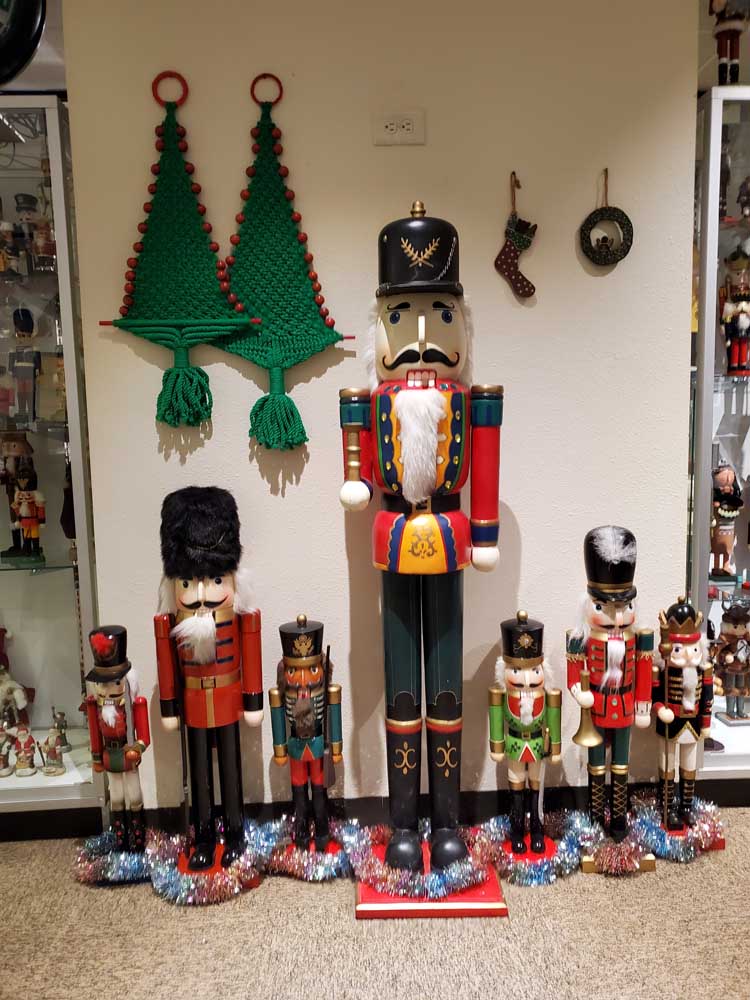Nutcracker toy soldiers guard Jacksonville museum for Christmas
Published 5:35 am Friday, December 2, 2022

- A new Christmas exhibit is now on display at the Vanishing Texana Museum in Jacksonville. The Nutcracker Exhibit features over 100 Nutcracker toy soldiers, a Christmas village, a Widow’s Mite coin minted around the time of the birth of Jesus, and tons of decorations.
A new Christmas exhibit is now on display at the Vanishing Texana Museum in Jacksonville. The Nutcracker Exhibit features over 100 Nutcracker toy soldiers, a Christmas village, a Widow’s Mite coin minted around the time of the birth of Jesus and tons of decorations.
The history of the Nutcracker dolls dates back to the late 17th century Germany. Craftsmen in the town of Seiffen, near the border of the Czech Republic, began making toy soldiers that would crack nuts as gifts. The gifts soon became a Christmas tradition, according to Vanishing Texana Museum curator Larry Lydick.
Demand continued to grow and in 1872, the same year Jacksonville was founded, Fredrich Wilhelm Fuchter, later to become known as the “father of the nutcracker”, opened a mass production facility also in Seiffen.
“In German folklore, the toys come to represent strength and power and are believed to watch over one’s family by keeping away evil spirits and danger,” said Lydick.
An average nutcracker doll is made out of about 60 separate pieces. They traditionally resemble toy soldiers and are often painted in bright colors.
Decorative nutcrackers became popular outside Europe after World War II when American soldiers stationed in Germany brought them home as souvenirs and gifts. Their popularity soared when a ballet adaption of E.T. Hoffman’s 1816 story “The Nutcracker and the Mouse King” was introduced to America in the 1950’s and helped to make nutcracker toy soldiers an iconic Christmas decoration.
Although what is seen in the stage production of “The Nutcracker” is different in detail from the original story, the basic plot remains the same. It is the story of a young German girl who dreams of a Nutcracker Prince and a fierce battle against a Mouse King with seven heads.
As the story opens, the Stahlbaum family is hosting their annual Christmas party for family and friends. Their children, Clara and Fritz are dancing, playing, and enjoying all the festivities. Their godfather, Drosselmeyer, presents his gifts to Fritz and Clara. Although Fritz receives a nice gift, Clara receives a beautiful nutcracker, in the image of royalty, who is the hit of the party.
Fritz is jealous and breaks Clara’s beautiful nutcracker. Drosselmeyer repairs the nutcracker with a handkerchief he magically draws from the air. As the evening draws to a close, Clara falls asleep under the Christmas tree holding her beloved nutcracker.
As midnight strikes, the toys around the tree come to life and the room fills with an army of mice led by the fierce Mouse King. Her Nutcracker awakens and leads the toy nutcracker soldiers into battle.
The small army is no match for the Mouse King. In an act of desperation, Clara throws her slipper at the Mouse King, hits him square in the head, and he falls to the floor. The other mice run away with their leader’s lifeless body.
The Nutcracker turns into a living prince and takes Clara on a journey, where they are greeted by the Sugar Plum fairy.
Upon hearing of their battle, the fairy rewards them with a celebration of dances. Clara awakens and finds herself under the tree holding her Nutcracker.
The Christmas exhibit is on display now through Dec. 31. Admission is free.
The Vanishing Texana Museum is at 300 S. Bolton St. in Jacksonville and is open 11 a.m. to 4 p.m. Thursday. to Saturday.
For more information, visit the Vanishing Texana Museum website.






